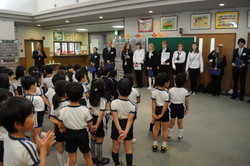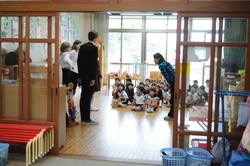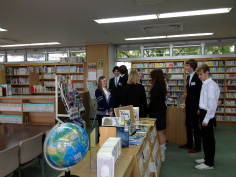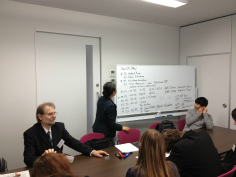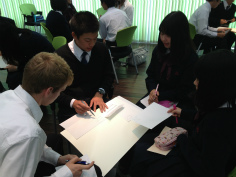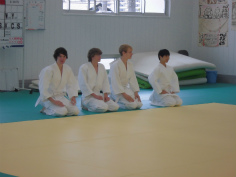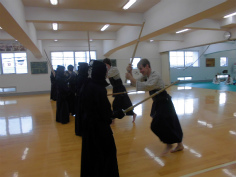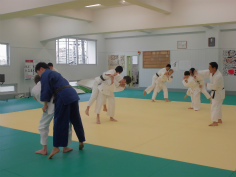It began with a speech of these two Herbart students. Hibarigaoka students and teachers fully understood their speech made in Japanese and their warm heart. It was touching and heartwarming.

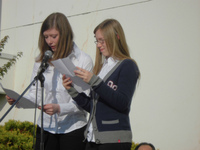
In the first period, each student joined the homeroom that their host student belongs to.
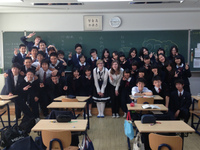
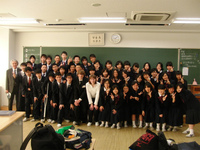
In the second period, they had fun making a haiku in English with the second-year high school students. After the teacher explained what haiku was, they had kaki(柿:Japanese persimmons). As you may know, haiku must have kigo(季語: season words). Kaki is an exact word which describe fall. They could not only understand what haiku was, but taste fall flavor. Then Herbart students and Hibari students tried finding kigo. Hibari students struggled to explain sanma(秋刀魚: saury), icho(銀杏: gingko), kouyou(紅葉: autumn color leaves) in English. Then they made a haiku together and wrote it on tanzaku(短冊: strip of paper). Herbart students are going to bring their own haiku back to Germany in remembrance of Hibarigaoka. These are some haiku they made.
・秋薫る あらっ 見上げれば 紅葉だ
・ドイツでは 男が笑う 満月だ
This haiku was written by the teacher from Germany. He made an English haiku.
"Look around and see
Leaves that are green turn to brown
summer time has gone"

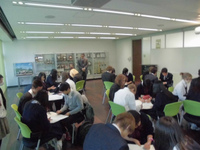
At the beginning of the third period, Herbart students made a presentation about Germany in English. Then the third-year junior high school students taught Kanji, Hiragana, Greetings or the meanings of their names in Japanese. Even though they were allowed to use Japanese, when Herbart students did not understand their Japanese explanation, they needed to use English, gesture, and facial expression to make them understood. Both students enjoyed learning many things about Japan and Germany.
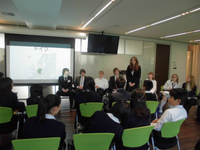
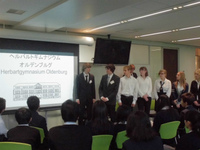
After lunch at the cafeteria, it was time for them to leave the school. Look at these students! Many students came to them to say good bye.
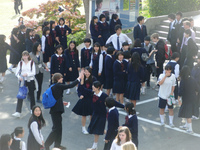
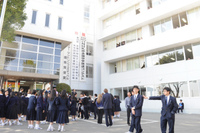
Some students burst into tear. They took many pictures and hugged each other again and again.
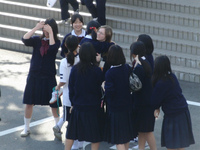
Thank you for coming to Hibarigaoka. Please visit us again!













